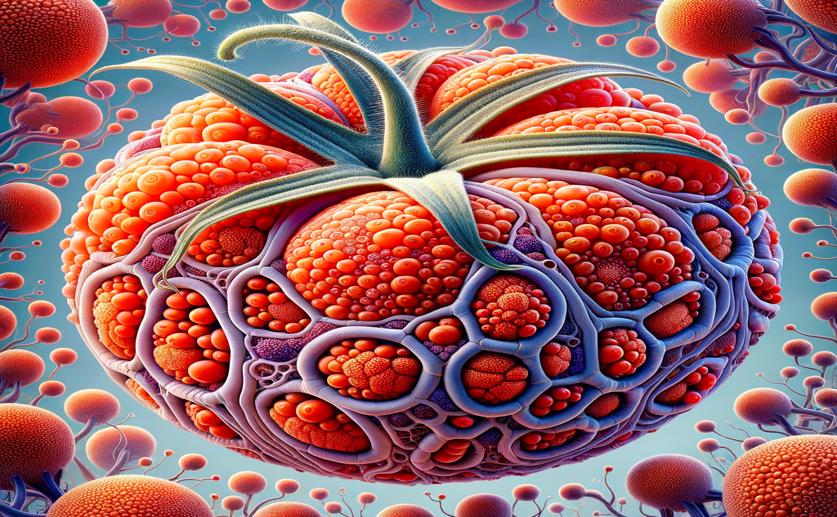
How Low Oxygen Affects Tomato Cell Walls During Ripening
Jenn Hoskins
7th June, 2024

Image Source: Natural Science News, 2024
Key Findings
- The study by the Polish Academy of Sciences focused on how low oxygen conditions affect tomato fruit ripening and quality
- Low oxygen conditions led to significant changes in cell wall components, such as a decrease in AGPs and pectins
- These changes in cell wall composition are linked to the softening process during fruit ripening, potentially extending shelf life
References
Main Study
1) Low oxygen environment effect on the tomato cell wall composition during the fruit ripening process
Published 6th June, 2024
https://doi.org/10.1186/s12870-024-05226-x
Related Studies
2) Response of plant metabolism to too little oxygen.
Journal: Current opinion in plant biology, Issue: Vol 6, Issue 3, Jun 2003
3) Regulation of the molecular response to oxygen limitations in plants.
4) Progress toward Understanding the Molecular Basis of Fruit Response to Hypoxia.
5) Structural network of arabinogalactan proteins (AGPs) and pectins in apple fruit during ripening and senescence processes.



 17th May, 2024 | Jenn Hoskins
17th May, 2024 | Jenn Hoskins